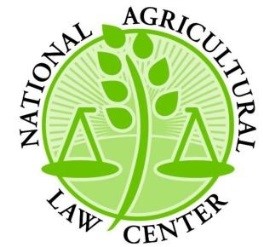Written by: Amie Alexander, JD/MPS Candidate, William H. Bowen School of Law
The Waterkeeper Alliance and the National Pork Producers Council sued the United States Environmental Protection Agency (EPA) in the U.S. District Court for the District of Columbia seeking review of a Final Rule issued by the EPA. The U.S. Poultry and Egg Association intervened in the suit. The Court reached its decision in April that the EPA did not have the authority to create an exception for farms to statutory requirements for notification of the release of hazardous substances. The National Pork Producers Council had separately challenged the EPA’s decision not to extend the general farm exception to concentrated animal feeding operations (CAFOs), however, because the court struck down the final rule, it did not consider this argument.
Background on hazardous substances reporting requirements
The Comprehensive Environmental Response, Compensation, and Liability Act of 1980 (CERCLA) (See 42 U.S.C. § 9603) and the Emergency Planning and Community Right-to-Know Act of 1986 (EPCRA) (See 42 U.S.C. § 11004) require parties to notify authorities if large quantities of hazardous materials are released into the environment. Per a 2008 EPA final rule (73 Fed. Reg. 76,948, 76, 956/1 (Dec. 18, 2008)), farms were generally exempted from CERCLA and EPCRA reporting requirements for animal waste air releases because the EPA reasoned these “reports are unnecessary because, in most cases, a federal response is impractical and unlikely.” This exception was later limited in scope to require large concentrated animal feeding operations (CAFOs) to abide by the reporting requirements. The parties in this suit focused the scope of “hazardous materials” on two substances emitted by decomposing animal waste – ammonia and hydrogen sulfide. Both substances were classified as hazardous substances by the EPA, which set the reportable quantity for each substance at 100 pounds per day.
The EPA’s authority as an administrative agency
In cases challenging an agency’s final rule, the Court reviews the rule under a reasonableness standard established by Chevron – if the agency interpretation of the statute is determined to be a response to a reasonable interpretation of a statutory ambiguity, the final rule will prevail. If the agency’s interpretation contradicts with an interpretation spoken directly by Congress, however, the agency’s interpretation will be determined unreasonable. The EPA’s action in exempting farms could also have been upheld if the exception was created as an implementation of the de minimis doctrine. The de minimis doctrine is a power granted to agencies to minimize pointless expenditures of effort; however, an agency cannot use this doctrine to create an exception to a statute that would provide benefits and further regulatory objectives, but the agency considers these benefits to be exceeded by the costs required to produce them.
The Court’s determination
The EPA argued that notifications of animal-waste releases serve no regulatory purpose, arguing that it would be “impractical or unlikely” to respond to such a release. The Court found it to be unclear why it would be impractical for the EPA to investigate in cases “where pumping techniques or other actions lead to toxic levels of hazardous substances such as hydrogen sulfide.” Commenters also provided that local or state authorities might use CERCLA release reports. In making its decision, the Court acknowledged significant costs that might outweigh the benefit derived from reporting requirements. For example, it is estimated that this final rule would “save farms more than a million hours and more than $60 million in compliance costs and cut out roughly 160,000 hours and $8 million in government costs related to those reports.” However, the Court stressed that even if this was the case, the authority to create such an exception lies with Congress, not the EPA. You can read the full opinion here.
The future of reporting requirements for farms
Recently, 28 senators sent a letter urging EPA Administrator Scott Pruitt to challenge this decision and allow the U.S. Supreme Court to decide whether the EPA was within its authority in exempting farms from these reporting requirements under CERCLA and EPCRA. In the letter, these Senators argued that “Congress never imagined the normal odors and emissions (including low-level concentrations of ammonia and hydrogen sulfide) of livestock, poultry, and egg production would somehow be captured” by these reporting requirements. Senators further argued that when the reporting requirements go into effect, farms and ranches across America could face potential liability if they handle reports incorrectly, and additionally, the influx of new reports would overburden the National Response Center and impede local first responders relying on reports of hazardous substances to act quickly in dangerous situations.
The Senators lastly urged Administrator Pruitt to clarify the applicability of agricultural exemptions contained in CERCLA and EPCRA, tailor reportable quantities to an appropriate level for livestock and poultry operations, and finally, to work with Congress if necessary to find an appropriate solution. While reporting requirements were originally set to go into effect for farms on June 2, 2017, reporting requirements are currently on hold due to the filing of a motion for rehearing in the case.
